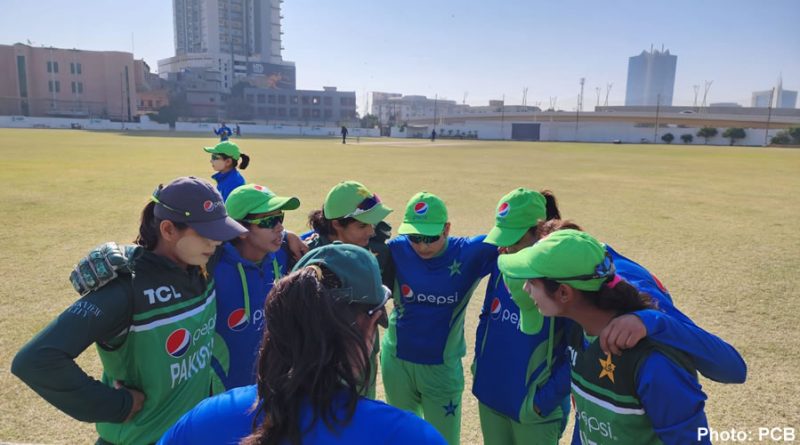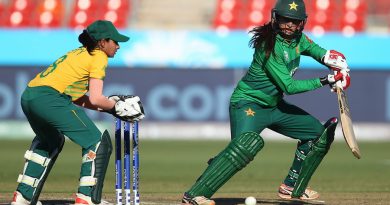World T20 2023 Preview: Pakistan
Is This the Breakthrough Generation?
Pakistan have never made it to the semi final stage of a World Cup in either ODIs or T20 Internationals. Is this team, this generation, the one to break through that ceiling?
There are plenty of positives about this team who possess the ability to both delight and disappoint. Two of the players were ICC Players of the Month (ODI) in October and November last year. Another, Fatima Sana, the ICC Emerging Player of 2021. The downside is the absence of Diana Baig, the team’s premier quick bowler and best fielder. Oddly enough her place in the squad was taken by a batter, Sadaf Shamas.
Squad
Schedule
Pakistan are in Pool B along with India, Ireland, West Indies and England. They play four games and must win three of them in order to guarantee a spot in the semi finals.
One could suggest quite reasonably that Pakistan will defeat the West Indies. They should also defeat Ireland although that team did hand Pakistan a drubbing back in September after winning the ODI series 3-0. Go figure. Their most recent match against India was a victory. I did say the ability to delight and disappoint…
It is fair to say that Pakistan’s fate is in their own hands. Should they beat India on the 12th they’ll give themselves momentum heading into the next few matches and clinch a spot in the semis.
- India (12 Feb)
- Ireland (16 Feb)
- West Indies (19 Feb)
- England (21 Feb)
Key Players
There are only two players in this team with a strike rate in excess of 100. They are Ayesha Naseem (124.01) and Nida Dar (101.01). Next best is Javeria Khan with 93.55. Batting has always been tough for this team.
Too often Nida Dar is on a rescue mission, while their biggest hitter, Ayesha, is usually left with a handful of deliveries at the end of the innings. Pakistan need to bite the bullet and get the youngster at the top of the order. She has done it before and comes with the bravado of youth. It may fail but when it works…
A more productive batting order might look like this: Muneeba (L), Ayesha (R), followed by either Javeria (R) or Bismah (L) to maintain the left/right combo at the top of the order where it is arguably more useful. This would then be followed by Nida Dar and Aliya Riaz, another whose run scoring ability is too often wasted. Fatima Sana at seven. From eight onwards is not that important, order wise. The key here though is to get the most productivity out of the same personnel, but in a different order.
For the main part, Pakistan are a very good fielding unit. Yes they’ll miss Diana at point but the team is quite reliable in the circle and have superb boundary riders in Aliya Riaz and Nashra Sandhu.
The biggest question is the position of wicket keeper. Muneeba deserves her place as a batter but her keeping is quite ordinary at times and I’ve lost count of the missed stumpings and catches. Some teams are happy to make this compromise with the position, India a prime example. It’s an incredible gamble that seldom pays off. Pakistan have an excellent wicket keeper in Sidra Nawaz who will probably spend the tournament carrying the drinks. It’s a pity.
With the ball we are likely to see the star of Fatima Sana rise and rise. She’s had good time to develop in a number of foreign countries – most recently Australia where she got to spend some time with Ellyse Perry. Fatima has taken wickets in Australia, New Zealand, England, West Indies and South Africa. This is her time.
It won’t surprise if Pakistan don’t select a second seamer, and for good reason. Aimen Anwar is steady at best, but can be terribly expensive. Best to with their excellent spin options. Nashra Sandhu is bowling better than ever, likewise Omaima Sohail, but the real gem of the tournament may end up being the leggie, Tuba Hassan. Not to mention the crafty Nida Dar. It’s a quality bowling line-up.
The Challenge
Getting past India is the first hurdle. That can be done with a more energetic approach with the batting. Too often one sees comments like “Test match batting” and while a bit mean, it’s also right.
It is quite common for this batting line-up to get bogged down and then rely on a spark at the end. Put that spark at the beginning. Who knows what might happen?




